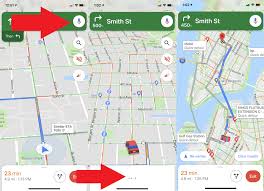The Importance of Maps in Our Daily Lives
Maps have been an essential tool for navigating and understanding the world around us for centuries. From ancient hand-drawn maps on parchment to modern digital mapping technologies, maps play a crucial role in various aspects of our daily lives.
Navigation and Travel
One of the most common uses of maps is for navigation and travel. Whether you are planning a road trip, hiking in the wilderness, or exploring a new city, maps provide valuable information about routes, landmarks, and points of interest. GPS-enabled maps on smartphones have revolutionized how we navigate, making it easier to reach our destinations efficiently.
Urban Planning and Development
City planners and developers rely on maps to make informed decisions about land use, infrastructure development, and resource allocation. Detailed maps help urban planners create sustainable cities that are efficient, accessible, and environmentally friendly.
Education and Research
In schools and universities, maps are used as educational tools to teach students about geography, history, politics, and more. Maps help students visualize spatial relationships and understand complex concepts in a tangible way. Researchers also use maps to analyze data spatially and gain insights into various phenomena.
Emergency Response and Disaster Management
During emergencies such as natural disasters or accidents, maps are vital for coordinating rescue efforts, evacuations, and resource distribution. Emergency responders use real-time mapping technology to track incidents, assess damage, and provide assistance to those in need.
Cultural Preservation
Maps play a crucial role in preserving cultural heritage by documenting historical sites, traditional territories, and indigenous knowledge. Cultural mapping helps communities protect their heritage, language, and traditions for future generations.
In Conclusion
Maps are not just tools for finding directions; they are powerful instruments that shape how we perceive the world around us. As technology continues to advance, the role of maps in our daily lives will only grow more significant. Whether on paper or digital screens, maps will continue to guide us through the complexities of our interconnected world.
Top 5 Frequently Asked Questions About Maps and Navigation
- How do maps help us navigate?
- What are the different types of maps?
- How are maps created and updated?
- What is the importance of scale on a map?
- How do GPS systems use maps for navigation?
How do maps help us navigate?
Maps help us navigate by providing visual representations of geographical locations, landmarks, and routes, enabling us to understand our surroundings and plan our journeys effectively. By depicting roads, trails, bodies of water, and points of interest, maps offer a clear overview of the terrain and help us determine the best path to reach our destination. Whether using traditional paper maps or digital mapping applications with GPS technology, maps give us the confidence to explore unfamiliar areas with ease and accuracy. With key information at our fingertips, maps serve as invaluable tools that guide us through both familiar neighborhoods and uncharted territories.
What are the different types of maps?
There are various types of maps designed to serve different purposes and convey specific information. Some common types of maps include political maps, which show boundaries between countries, states, or regions; physical maps, which depict geographical features such as mountains, rivers, and deserts; thematic maps, which focus on specific themes like population distribution or climate patterns; topographic maps, which detail elevation levels and terrain contours; and navigational maps, such as road maps or nautical charts, used for travel and navigation. Each type of map offers a unique perspective on the world around us and serves a distinct function in helping us understand our environment.
How are maps created and updated?
Maps are created and updated through a meticulous process that involves a combination of advanced technology, satellite imagery, geographic information systems (GIS), and on-the-ground surveys. Initially, cartographers gather data from various sources to create a base map, which serves as the foundation for further detailing and customization. As new information becomes available or changes occur in the landscape, mapmakers use sophisticated software to incorporate updates seamlessly. Field surveys, aerial photography, and crowd-sourced data also play crucial roles in ensuring that maps remain accurate and up-to-date. The collaborative effort between technology and human expertise is essential in the continuous creation and maintenance of maps that serve as indispensable tools for navigation, urban planning, emergency response, and cultural preservation.
What is the importance of scale on a map?
The importance of scale on a map cannot be understated, as it plays a crucial role in accurately representing the relationship between the real world and the map itself. Scale indicates the ratio between distances on the map and actual distances on the ground, allowing users to interpret size, distance, and proportions correctly. A larger scale provides more detail but covers a smaller area, while a smaller scale shows a broader view but with less detail. Understanding and using scale effectively is essential for accurate navigation, planning routes, estimating travel time, and interpreting spatial information on maps with precision.
How do GPS systems use maps for navigation?
GPS systems use maps for navigation by utilizing a network of satellites to determine the device’s exact location on Earth. These satellites communicate with the GPS receiver in the device, providing precise coordinates that are then overlaid onto digital maps. By integrating real-time positioning data with detailed map information, GPS systems can calculate the best routes, provide turn-by-turn directions, and offer information about points of interest along the way. This seamless integration of satellite technology and mapping data allows GPS systems to guide users accurately from one location to another, making navigation easier and more efficient than ever before.

